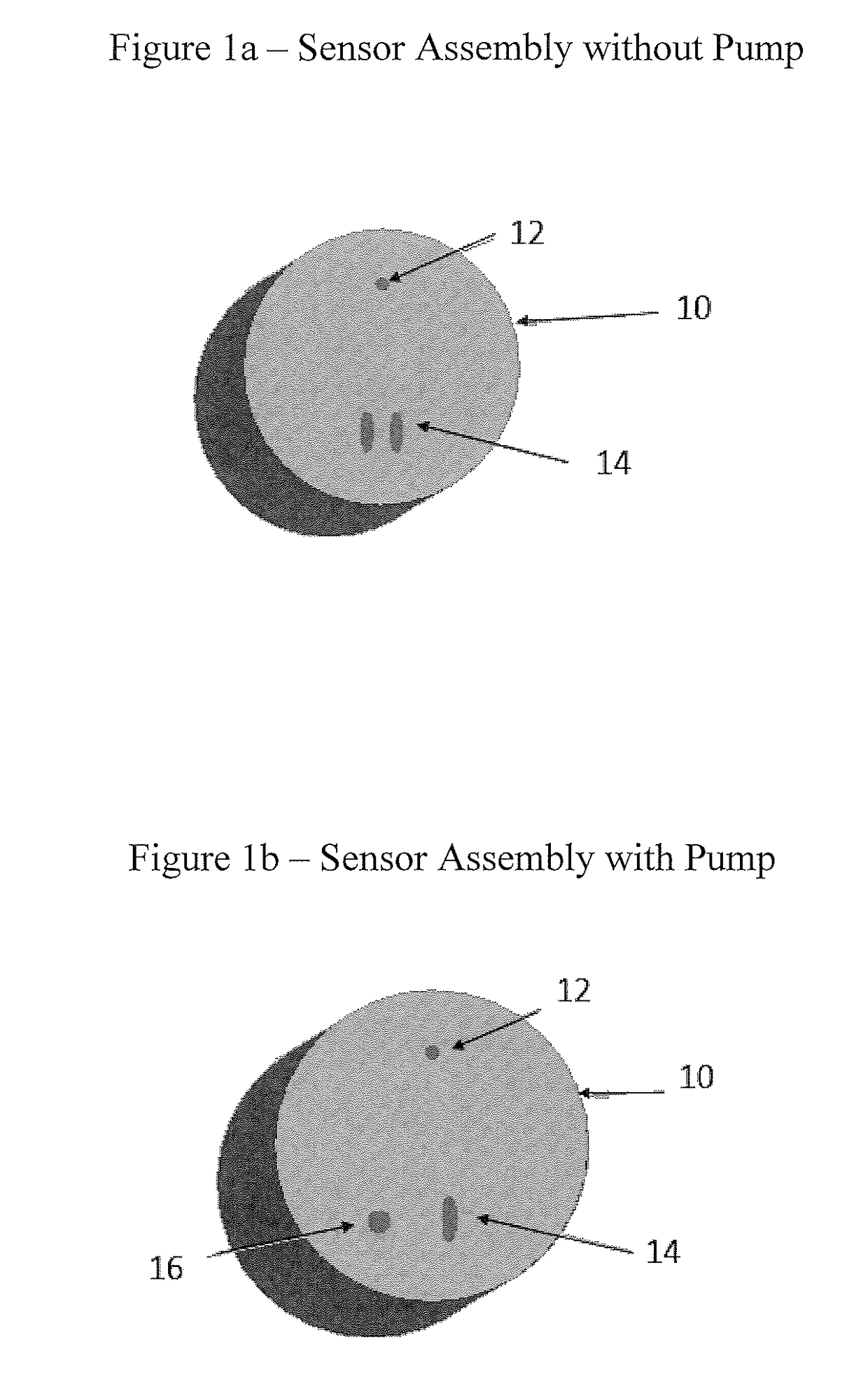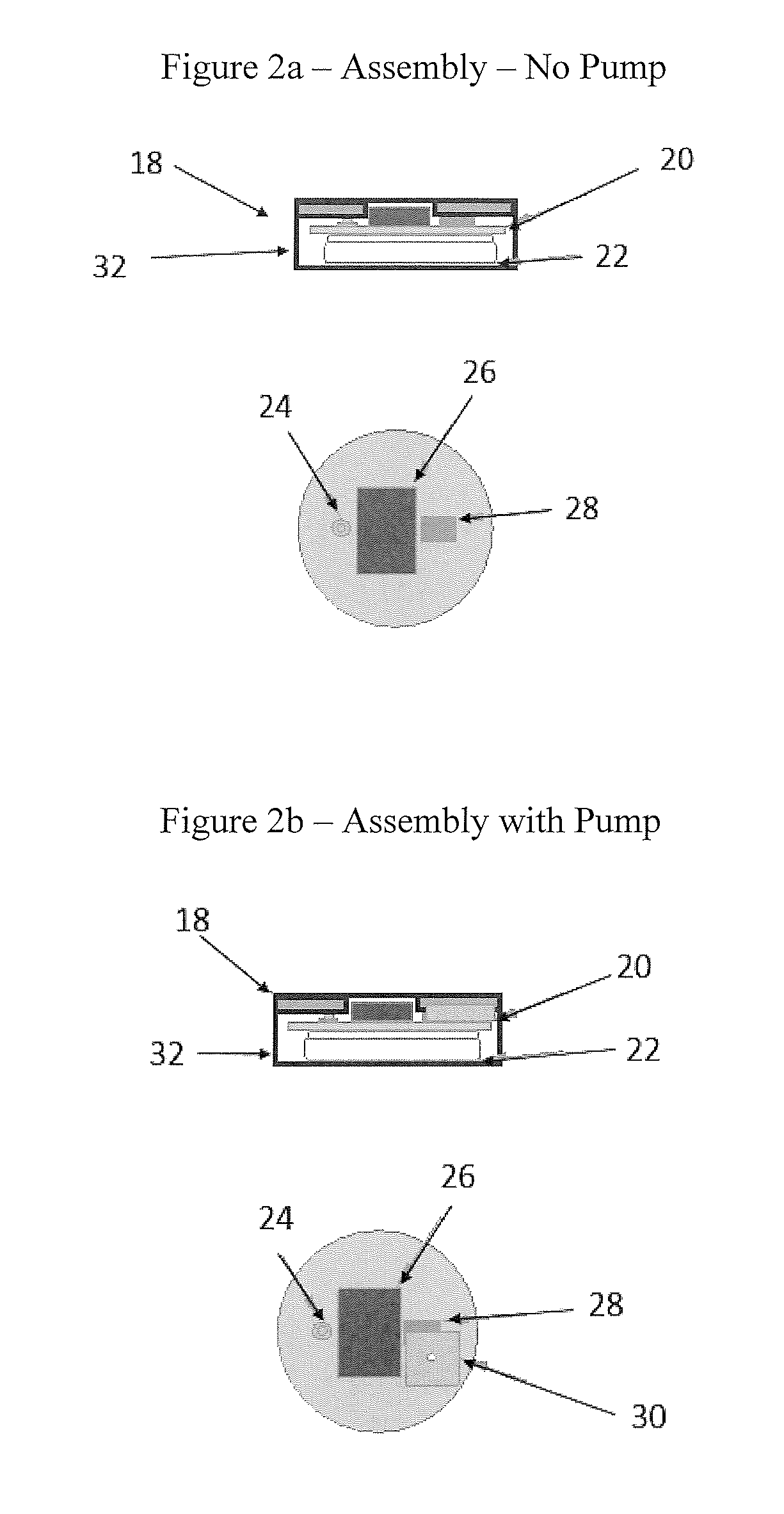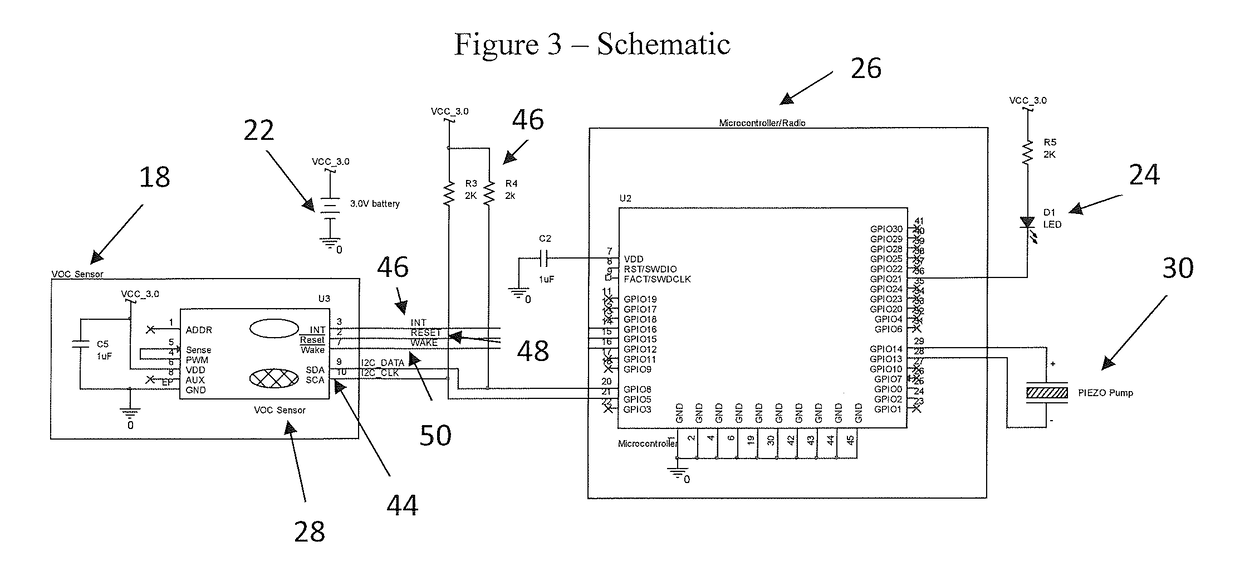Cockpit and Crew Rest Air Quality Sensor
a technology for air quality sensors and cockpits, applied in the direction of instruments, energy-efficient board measures, transportation and packaging, etc., can solve the problems of pilot errors or impaired judgment, cognitive degradation of aircraft flight crew, impaired judgment, etc., and achieve the effect of better understanding the risks of crew members
- Summary
- Abstract
- Description
- Claims
- Application Information
AI Technical Summary
Benefits of technology
Problems solved by technology
Method used
Image
Examples
Embodiment Construction
[0014]FIG. 1a depicts a sensor 10 that contains a sensor vent 14 enabling the sensor 10 to access ambient air within a cockpit, crew rest or any other area of an aircraft where sensing air quality is desired. The sensor 10 takes periodic samples of the surrounding air under the control of a microcontroller (uC) 26 (as illustrated in FIG. 2). The sensor 10 and the uC 26 communicate across a bi-directional Inter-Integrated Circuit (I2C) bus 44 (as illustrated in FIG. 3). The uC 26 sends a command string to wake the sensor 10, perform a measurement, then put the senor 10 back to sleep. Placing the sensor 10 in a low power mode conserves power reserves and facilitates powering the sensor 10 from energy harvesting in proper conditions. U.S. patent application Ser. No. 15 / 427,131, by Jouper, titled “Network System for Autonomous Data Collection,” describes powering sensors and communication networks by energy harvesting. The disclosure of U.S. Ser. No. 15 / 427,131 is incorporated by refere...
PUM
| Property | Measurement | Unit |
|---|---|---|
| vapor concentration | aaaaa | aaaaa |
| volatile organic | aaaaa | aaaaa |
| power | aaaaa | aaaaa |
Abstract
Description
Claims
Application Information
 Login to View More
Login to View More - R&D
- Intellectual Property
- Life Sciences
- Materials
- Tech Scout
- Unparalleled Data Quality
- Higher Quality Content
- 60% Fewer Hallucinations
Browse by: Latest US Patents, China's latest patents, Technical Efficacy Thesaurus, Application Domain, Technology Topic, Popular Technical Reports.
© 2025 PatSnap. All rights reserved.Legal|Privacy policy|Modern Slavery Act Transparency Statement|Sitemap|About US| Contact US: help@patsnap.com



